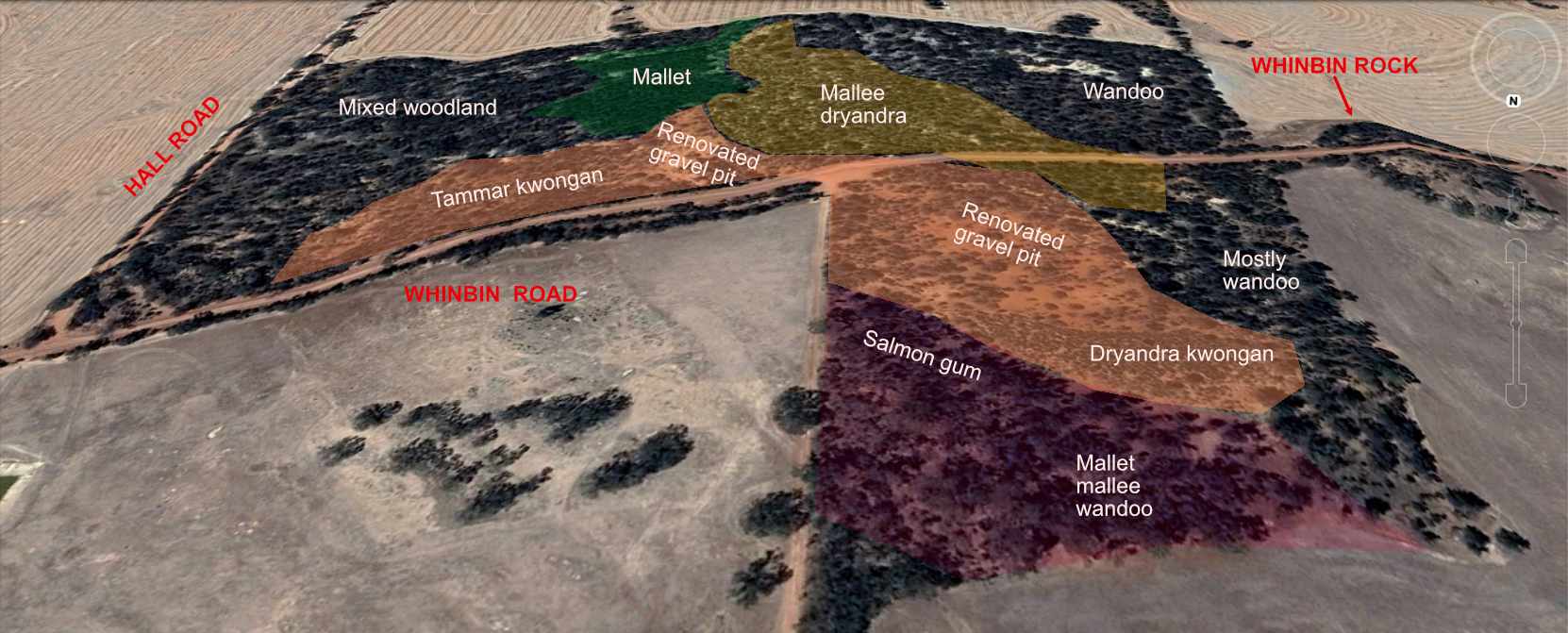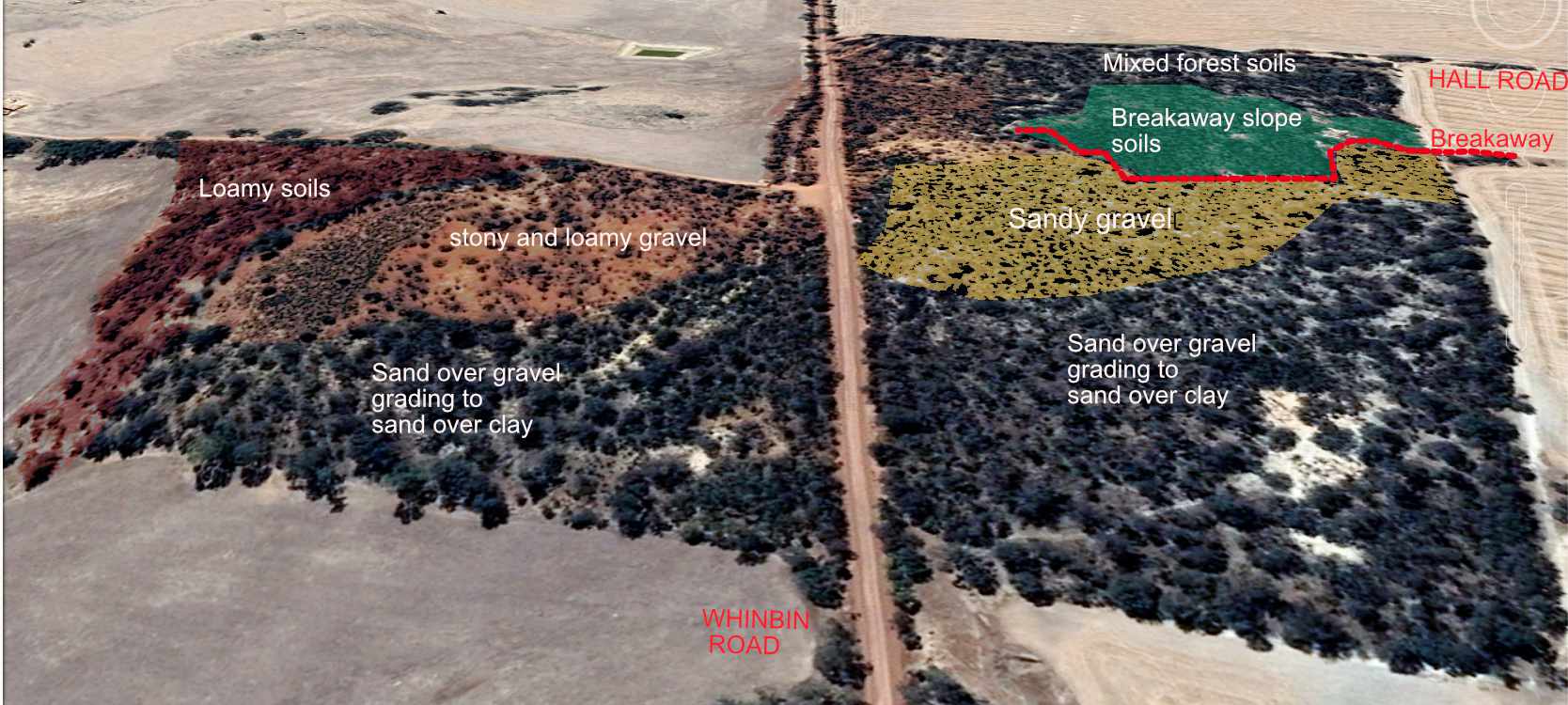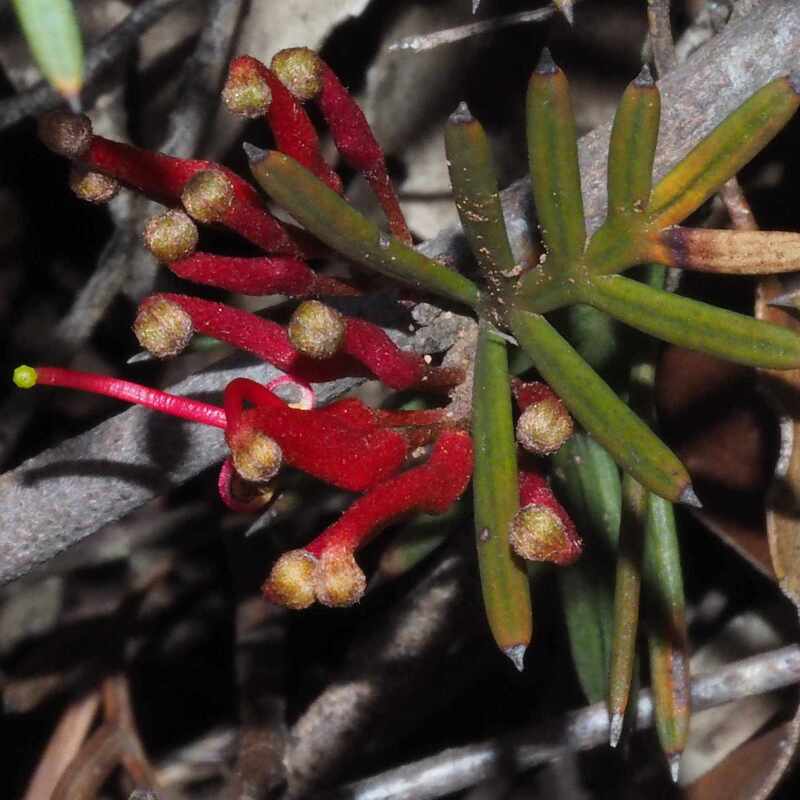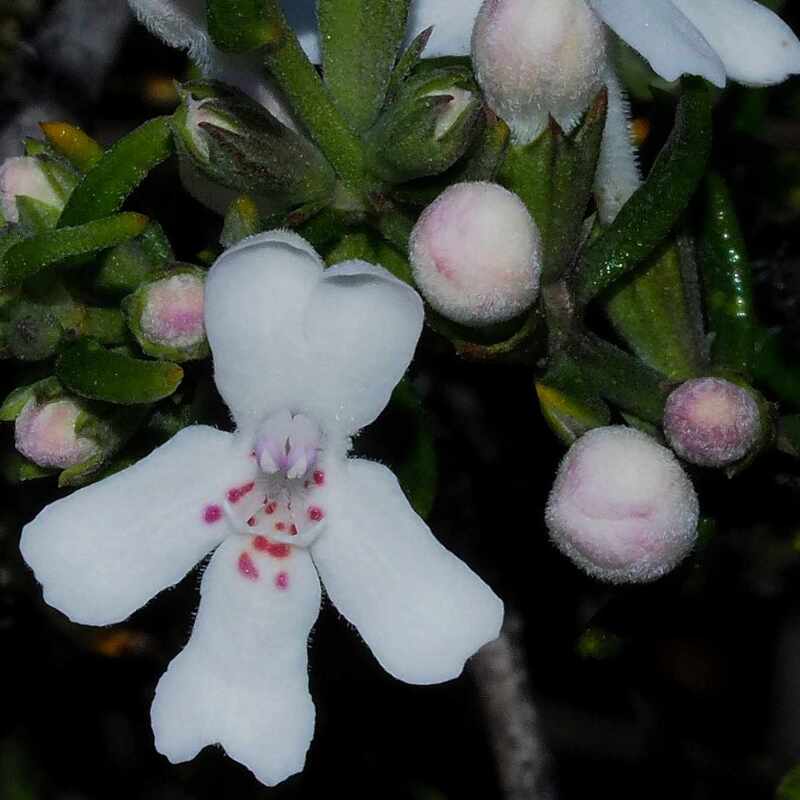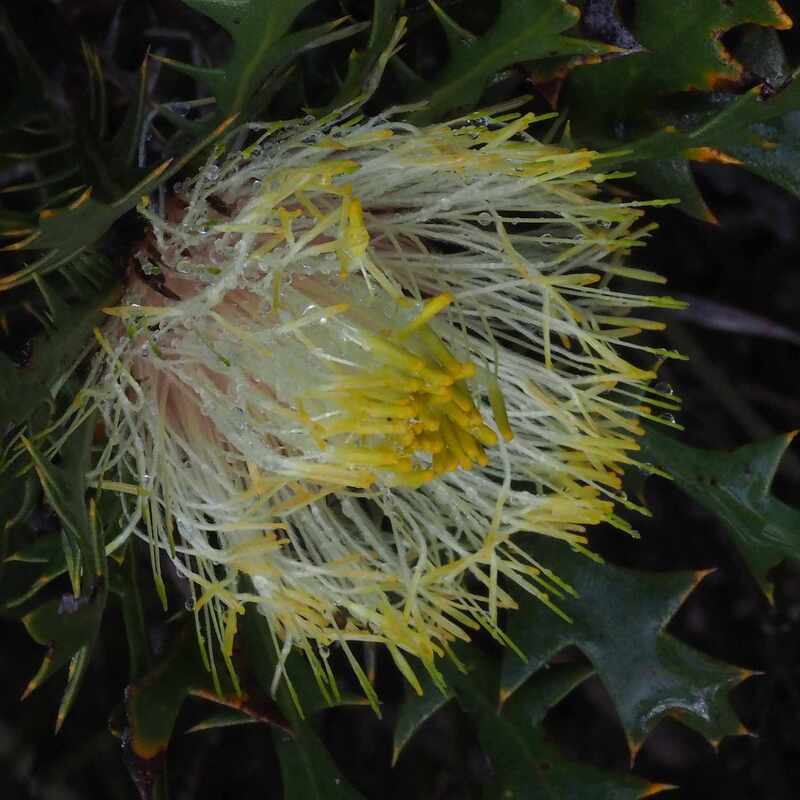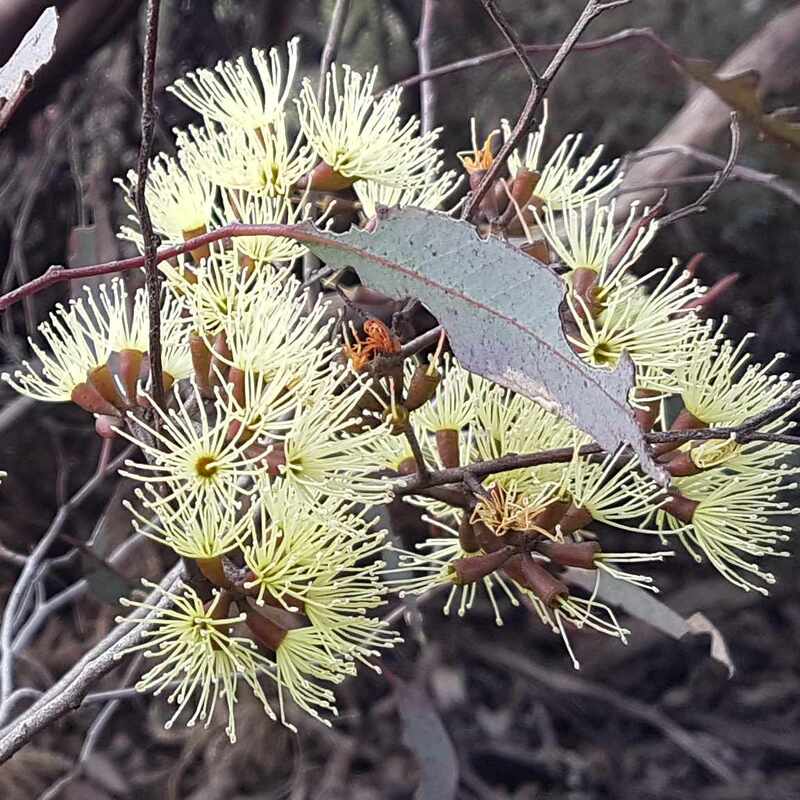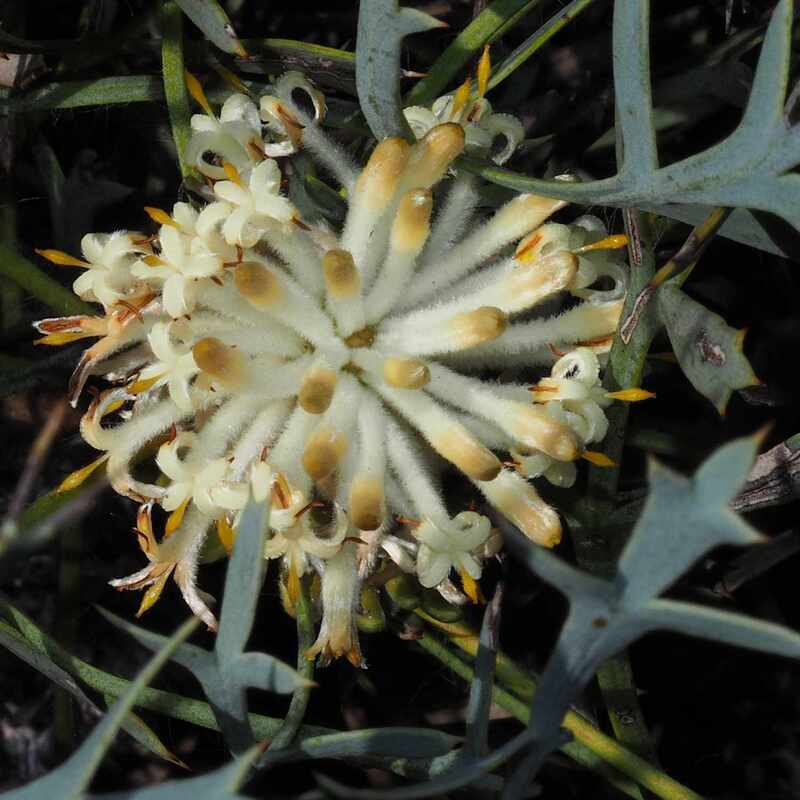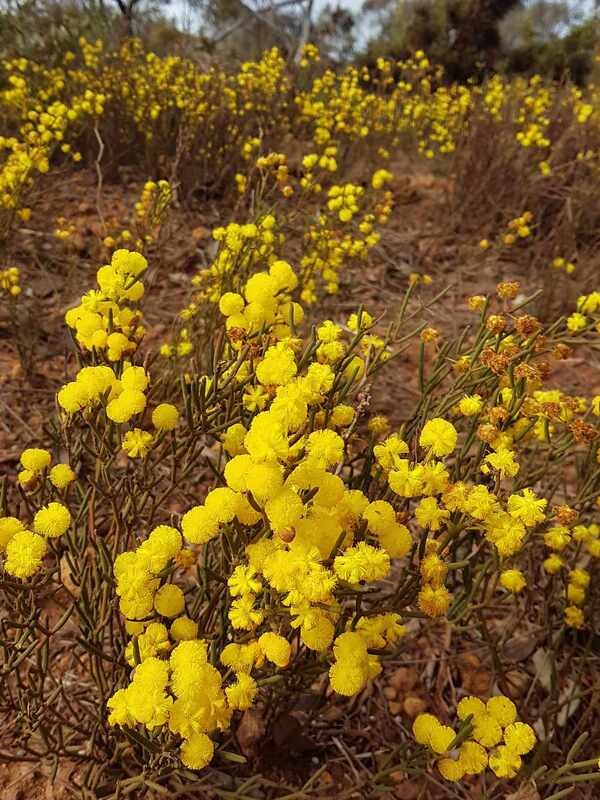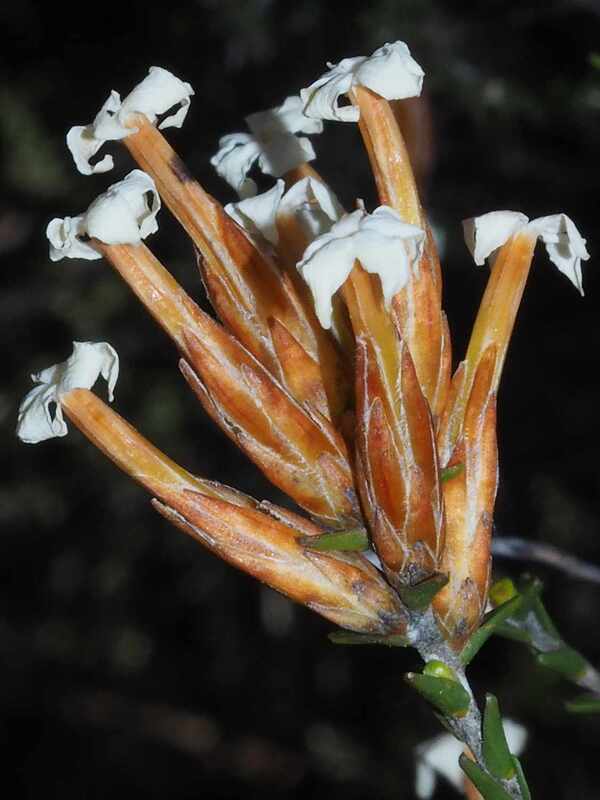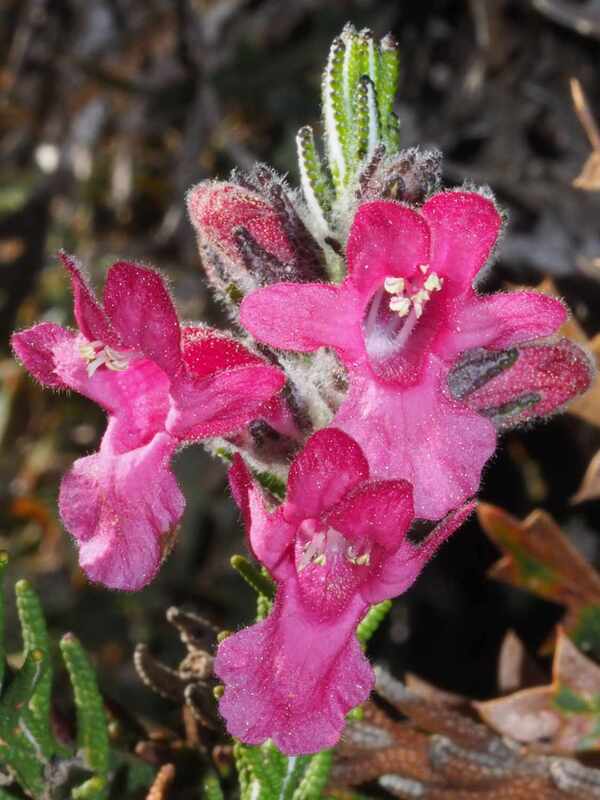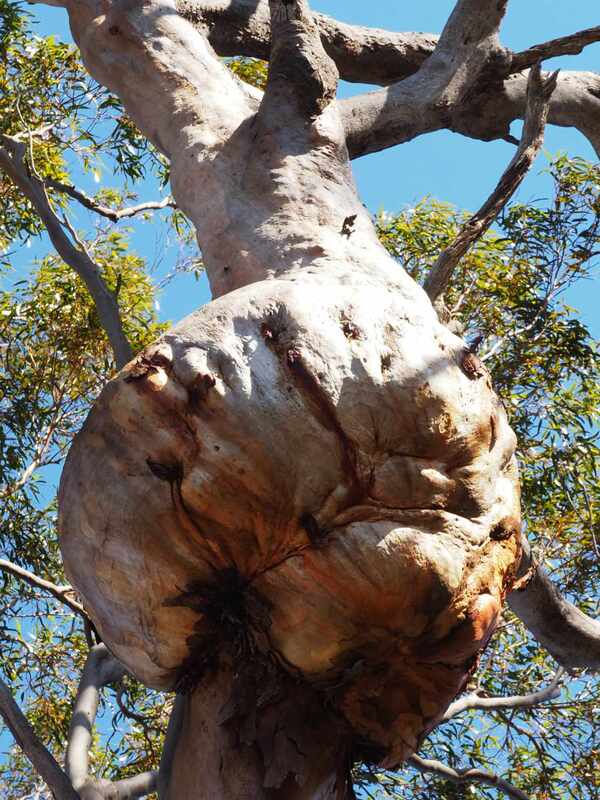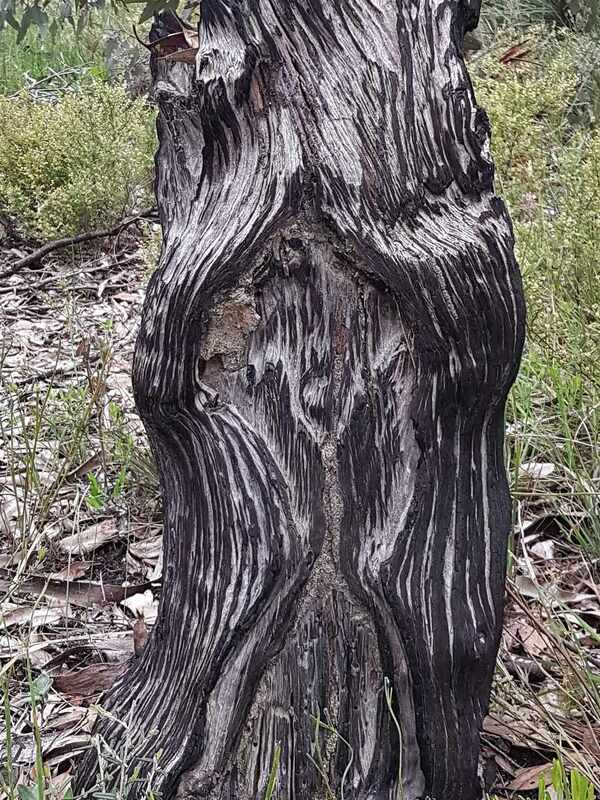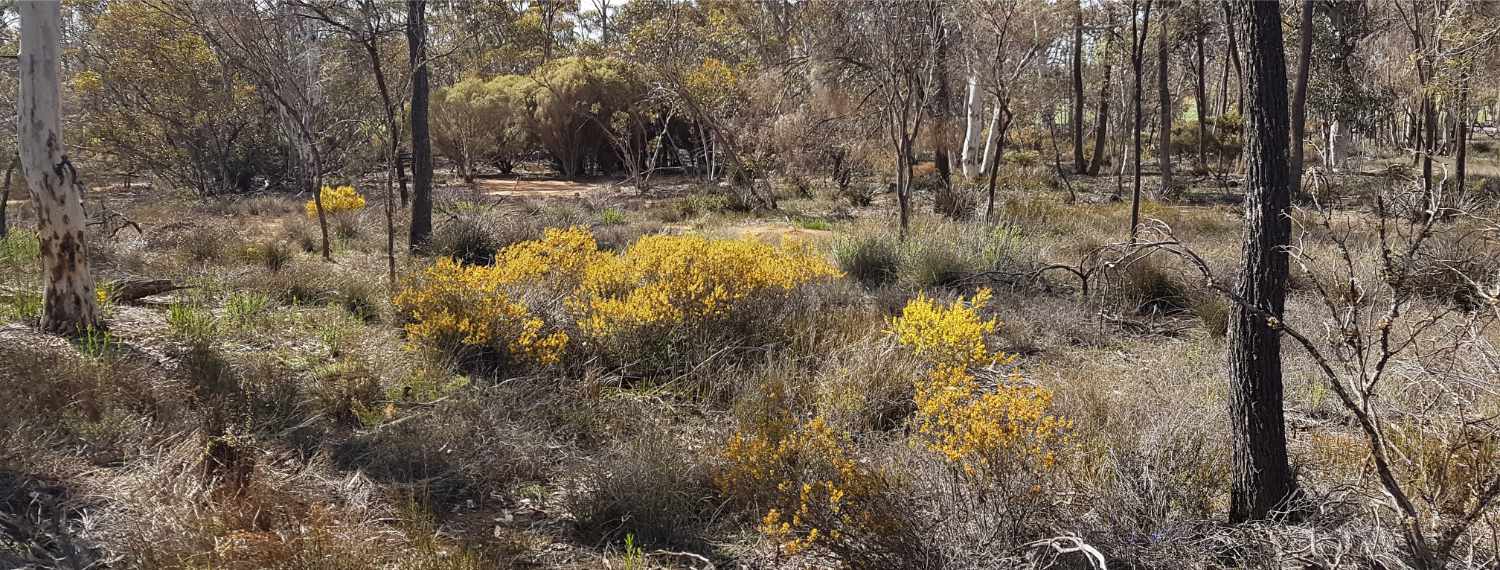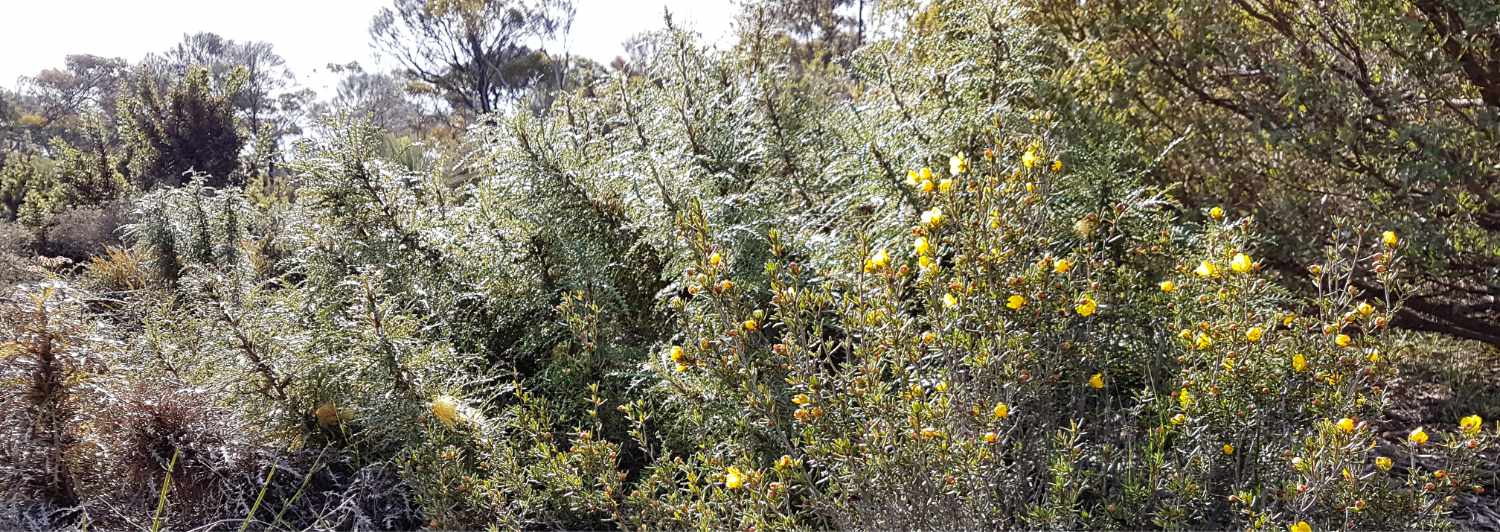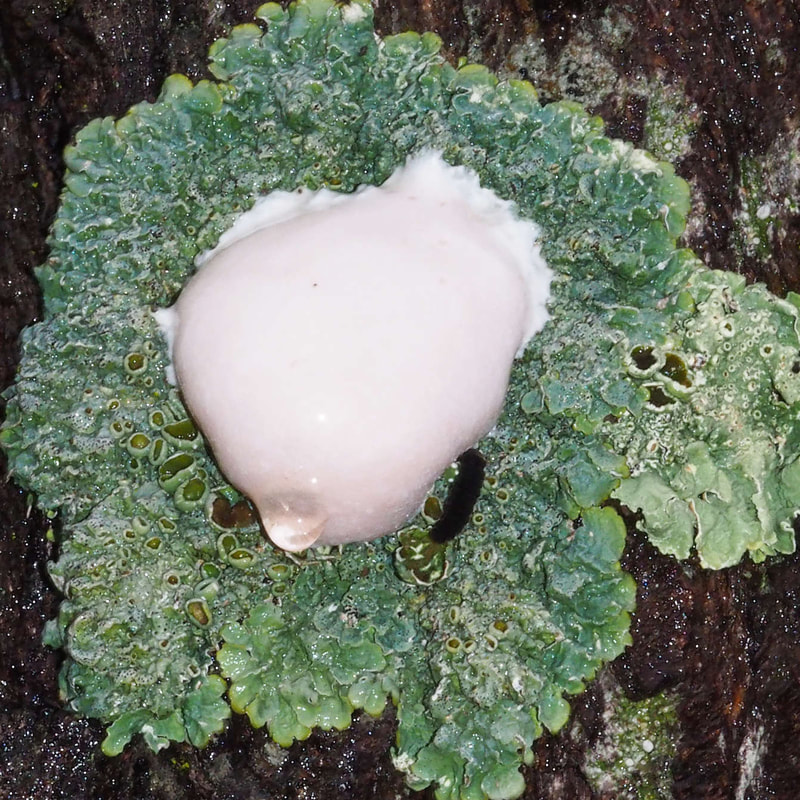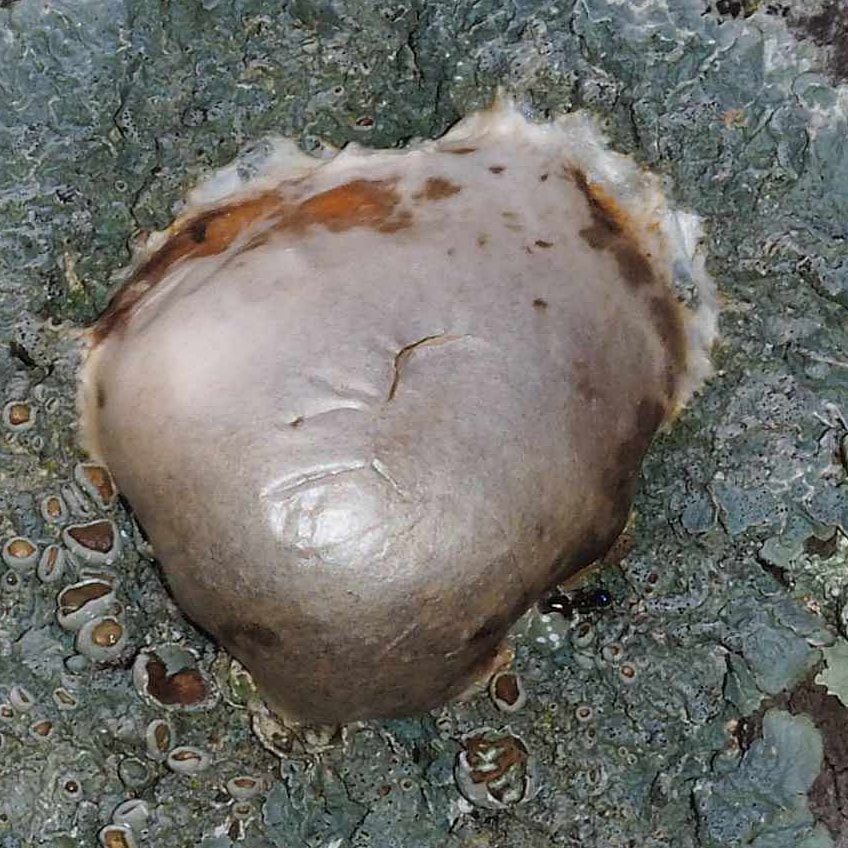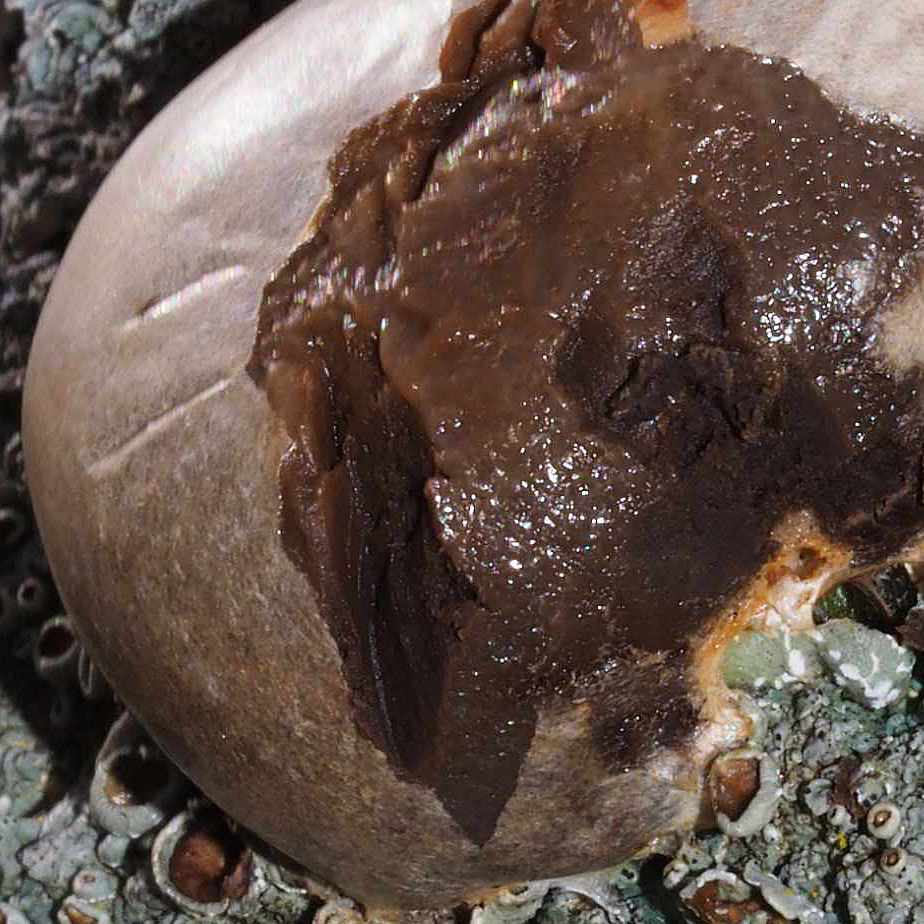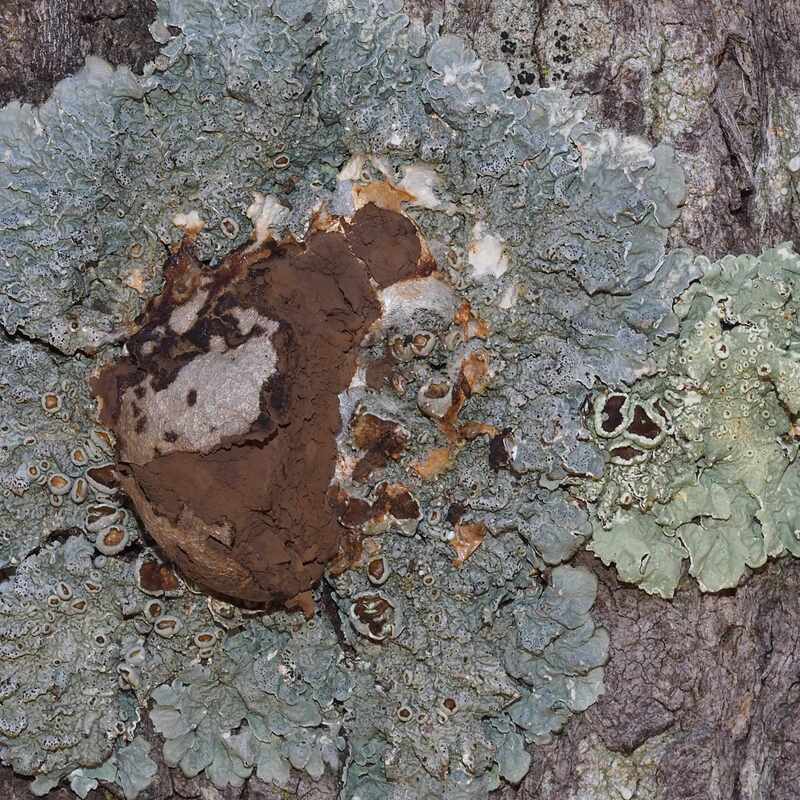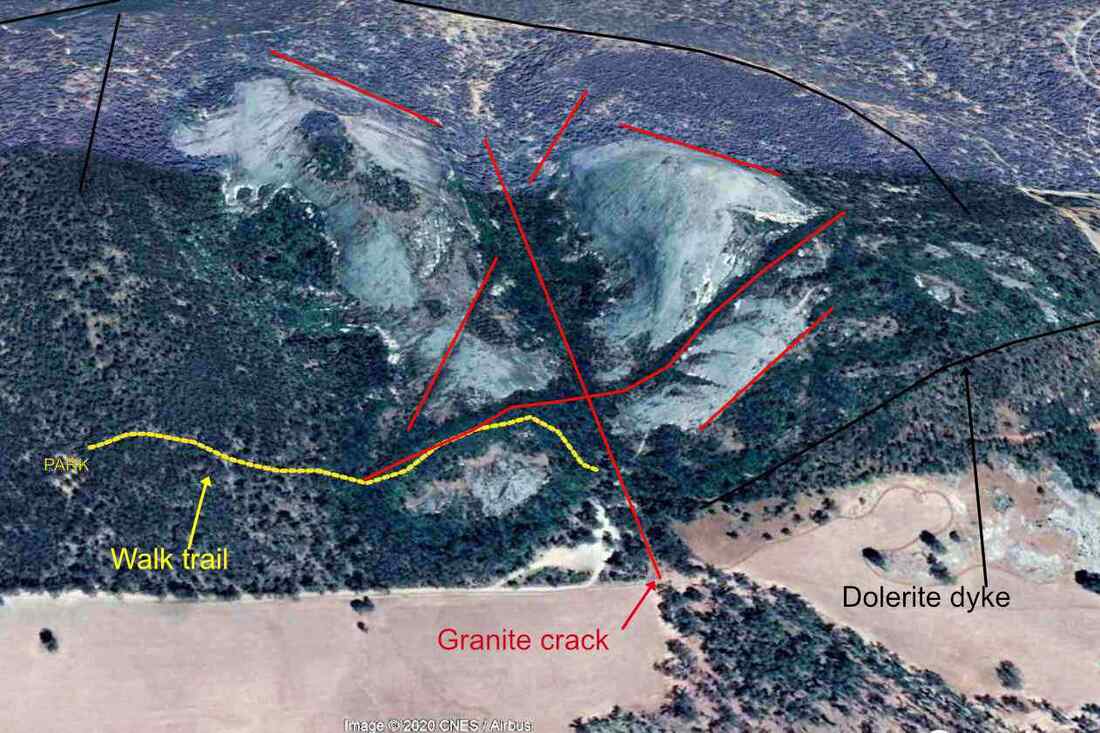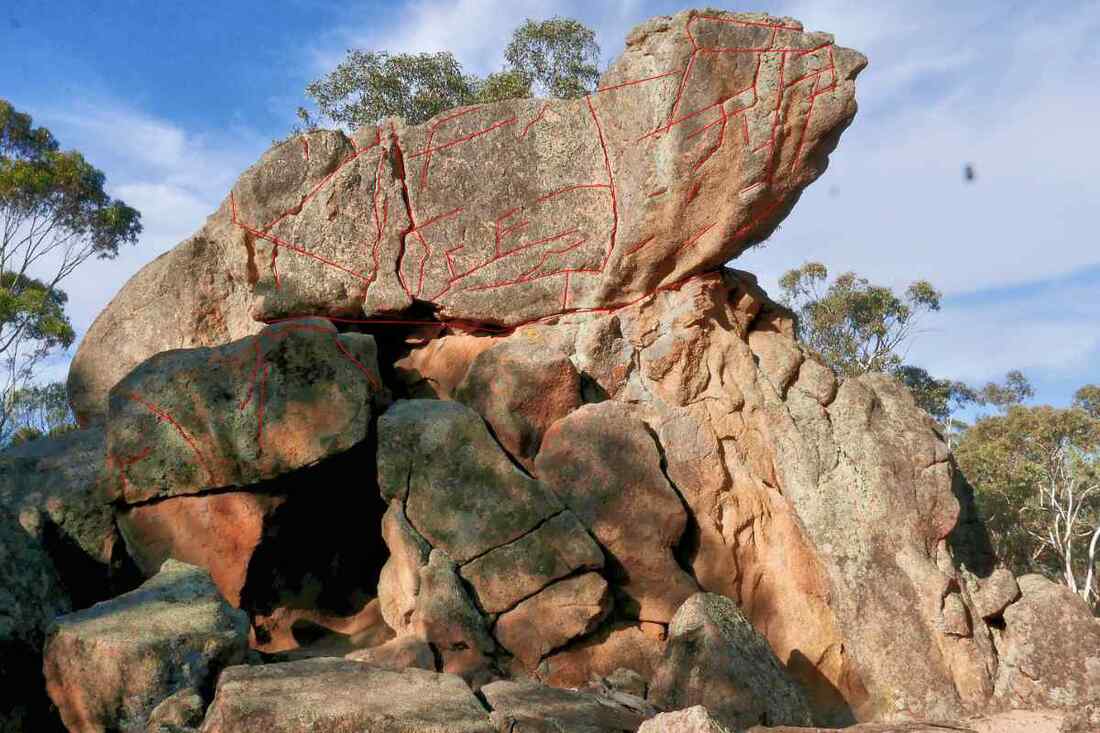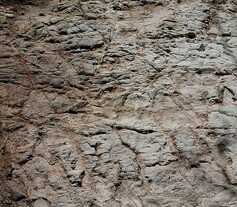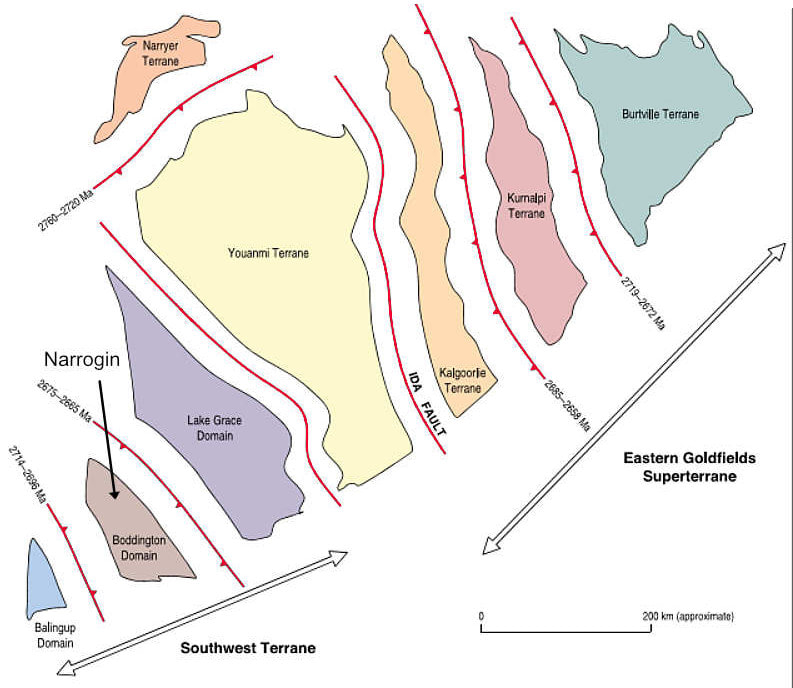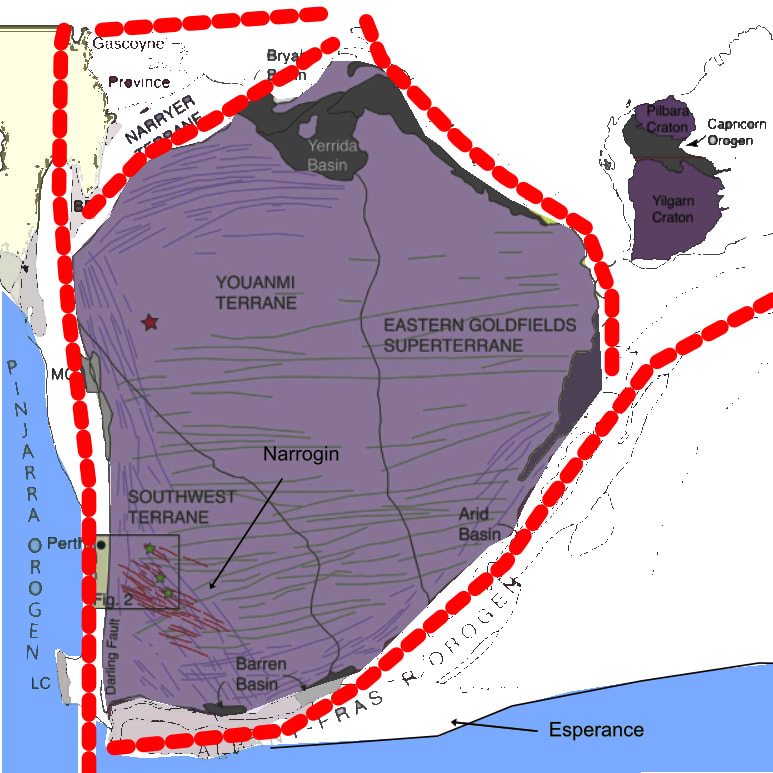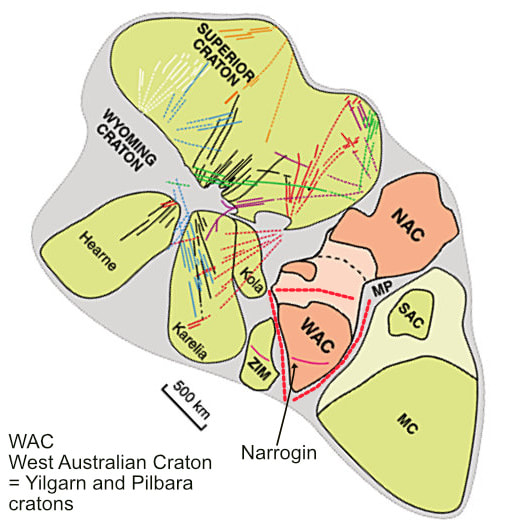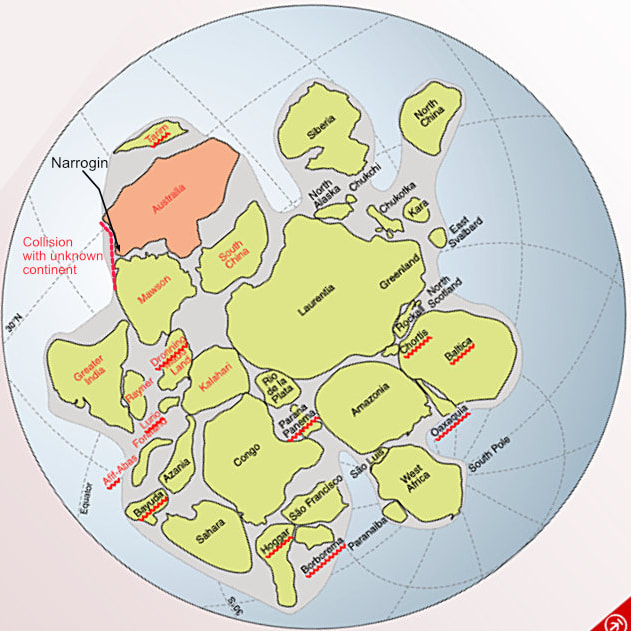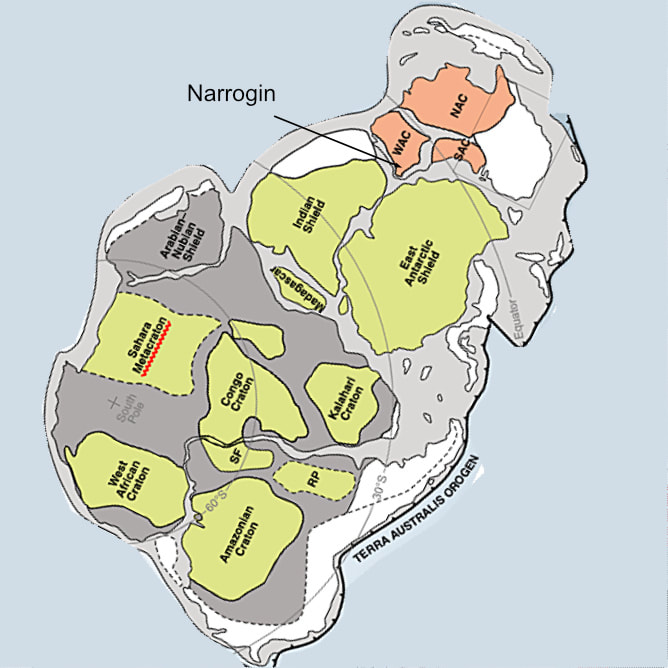Whinbin Nature Reserve adjoins Whinbin Rock about 20km east of Highbury on the (sealed) Whinbin Road. Although only 38 hectares in size its strategic location on a ridge provides a valuable bird breeding refuge within substantially cleared farmland. About a quarter of the reserve had been mined for gravel and sand, but this area has been replanted, and trees and other vegetation elsewhere is in good condition.
There are no internal or boundary roads or tracks apart from one on the south-western side that leads from Whinbin Road to a renovated sand pit.
The northern side of the reserve has little interest for bushwalkers apart from a line of salmon gums with a few delightful understorey plants. I was surprised to see a grevillea on that loamy soil, but the plant, Grevillea huegelii is found further east.
